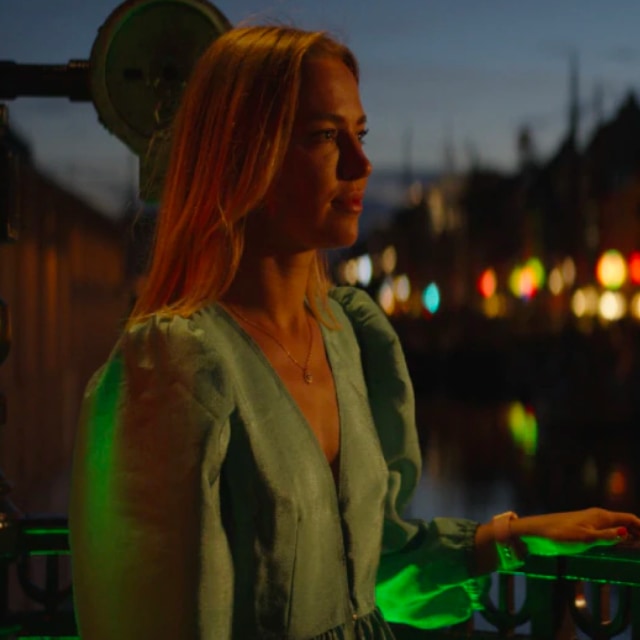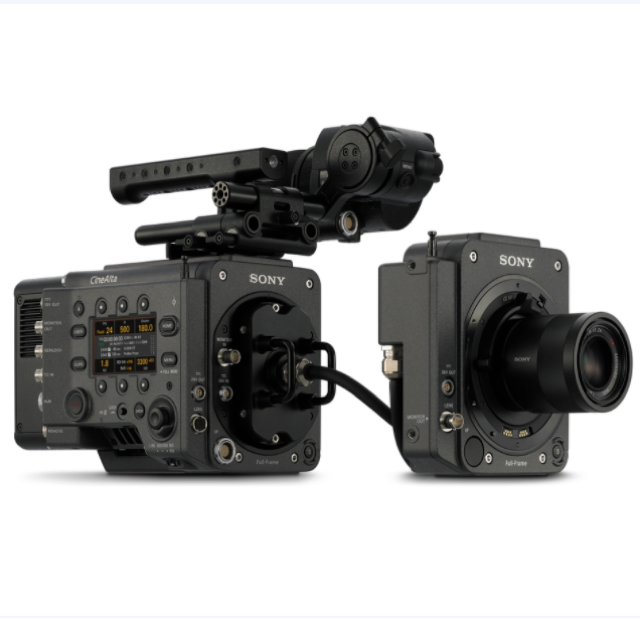Scene Deconstruction with Martin Ruhe, ASC
Deconstructing key scenes from George Clooney’s ‘The Boys in the Boat’.
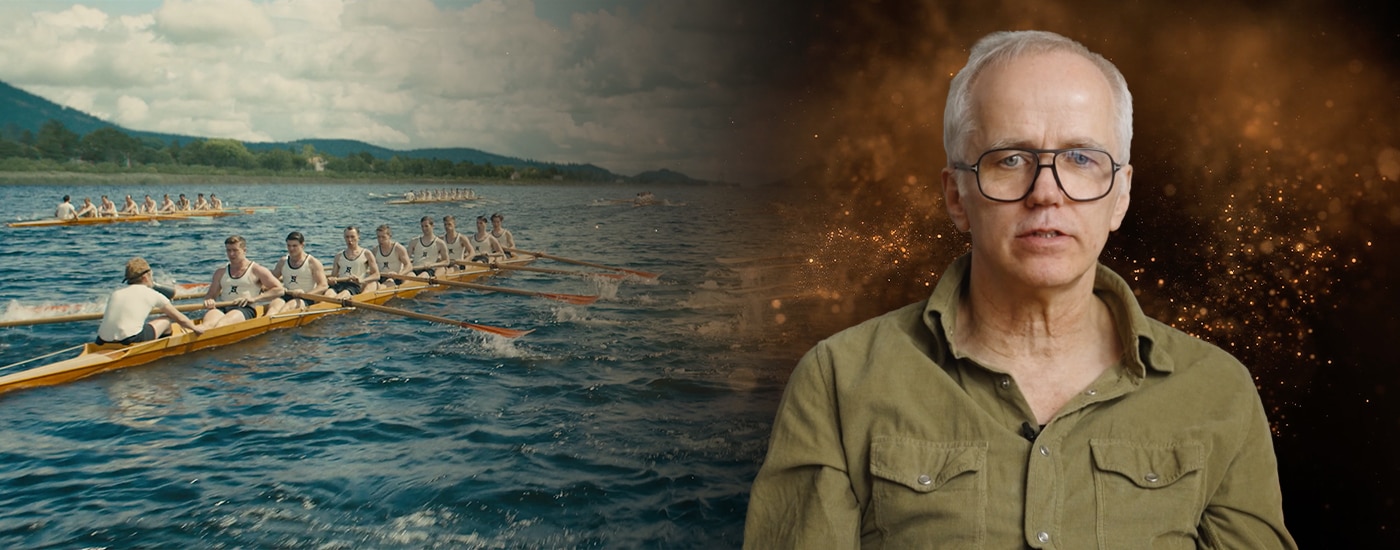
Based in Berlin, Martin Ruhe ASC is an award-winning cinematographer whose credits include hundreds of music videos and commercials. His feature films include Control (2007) based on Joy Division’s lead singer Ian Curtis’s life story, The American (2010) a thriller starring George Clooney and American Pastoral (2016) based on the novel by Philip Roth. Martin has also worked on acclaimed TV series such as Counterpart (2017-18) and all six episodes of Catch-22 (2019).
The Boys in the Boat (2023) sees him reunited with George Clooney as the director of a true-to-life bestselling book by Daniel James Brown. It follows an underdog US rowing team and their entry into the 1936 Olympics in Germany shortly before WWII.
Martin really wanted a look that can be obtained when shooting with a large sensor and after testing he settled on the Sony VENICE with ARRI Alpha anamorphic lenses. One of the key benefits of the VENICE camera is that it can be used either as a full frame camera or a Super 35mm camera. With VENICE you can shoot at 6K in FF or 4K in Super 35 (VENICE 2 with the 8K sensor can shoot at up to 8.6K in Full Frame and 5.8K in Super 35). This greatly increases the range of lenses that can be used, and this was particularly useful for many of the scenes on the water where the director wanted to use zoom lenses.
Please note in this video the Sony CBK-3610XS VENICE Extension System is referred to by an unofficial nickname ‘Rialto’. Apologies for any confusion.
Scene Deconstruction: Key Insights
- Sometimes when shooting outdoor scenes with changeable sky conditions you just have to accept the changes to the lighting – however this can also create a more natural look.
- A detailed storyboard and breaking a scene into smaller sections can help make shooting very complex scenes easier.
VENICE was the most flexible choice we could make, I could use the VENICE Extension System, I could change the ND, I knew there would be so much work on the water, so I wanted the most flexible system with the highest resolution and that was the Sony VENICE.
Martin Ruhe, ASC
Rowing Application Scene
In this scene that takes place outside the rowing clubs boathouse where we see a large group of young men all eager to gain one of the 8 places on the rowing team. Although rowing was incredibly popular as a sport at that time, the hero of the film had no idea of what he was really getting into.
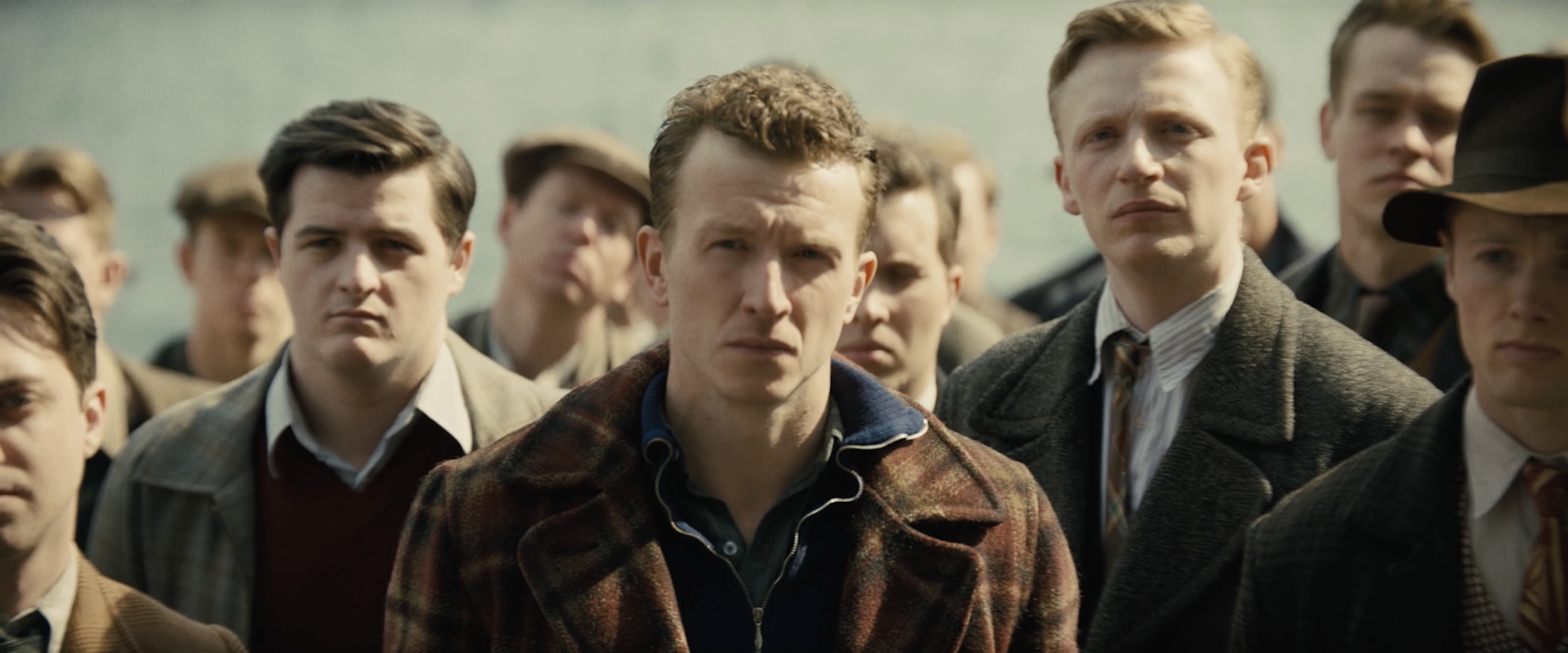
The boathouse set was built besides an artificial lake in Swindon in the UK. One of the challenges with any outdoor shoot is changeable lighting conditions and on the morning that this scene was shot the cloud cover frequently changed. Martin made use of the natural mostly soft light but added additional 4×4 frames with unbleached white cloth to reenforce and shape the light adding contrast to the actors faces. Martin felt that even though the light changed a bit from shot to shot this didn’t detract from the scene as the main focus was the actors faces and the changing light felt very natural.
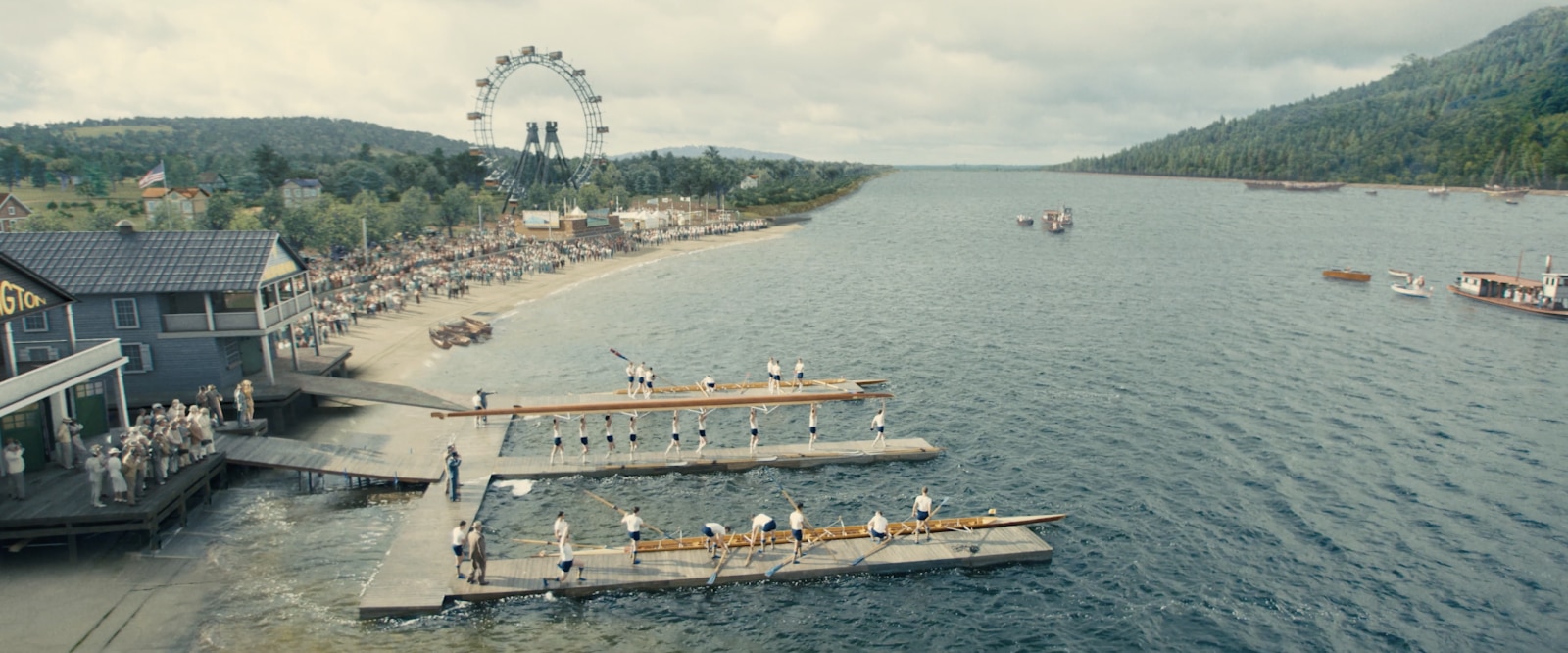
Martin says that working with Clooney was “almost like a family affair, he’s a very trust-full, visual director that likes to go with the energy of the set and he loves to move fast”. This meant trying to keep the lighting simple. For this film adding big outdoor lighting rigs or adding a lot of negative fill to make a shot a bit more beautiful would slow down the shooting pace and they had a lot of shots to shoot in a very short time so Martin kept the lighting as simple as possible.
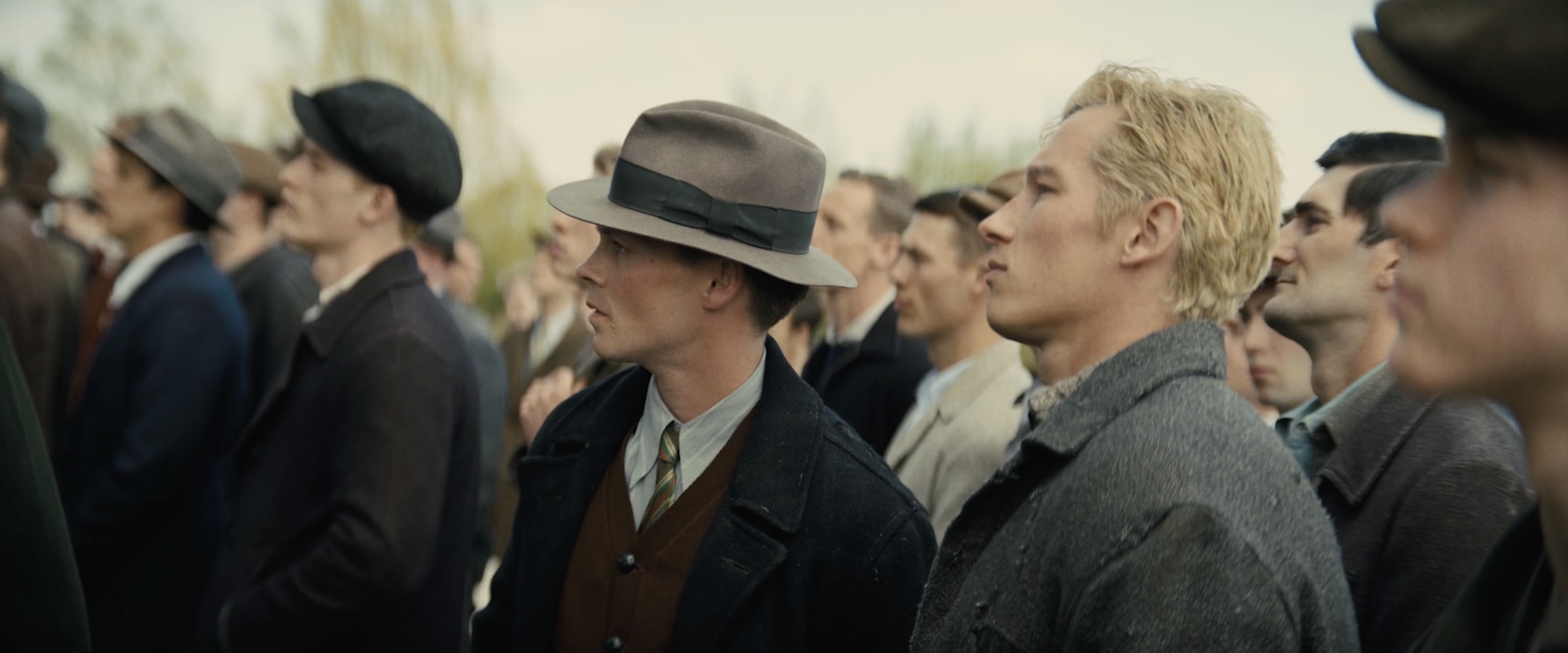
Poughkeepsie Race Scene
This was a very complex scene to shoot involving a lot of quite different elements. There were 7 boat teams racing on the water, an audience along the banks, an open sided train for spectators that followed the racers. To film all the different elements there were land based cameras, camera boats and drones. The shots of the train were done at a separate location to the main location. There were pages and pages of storyboards for this very complex scene.
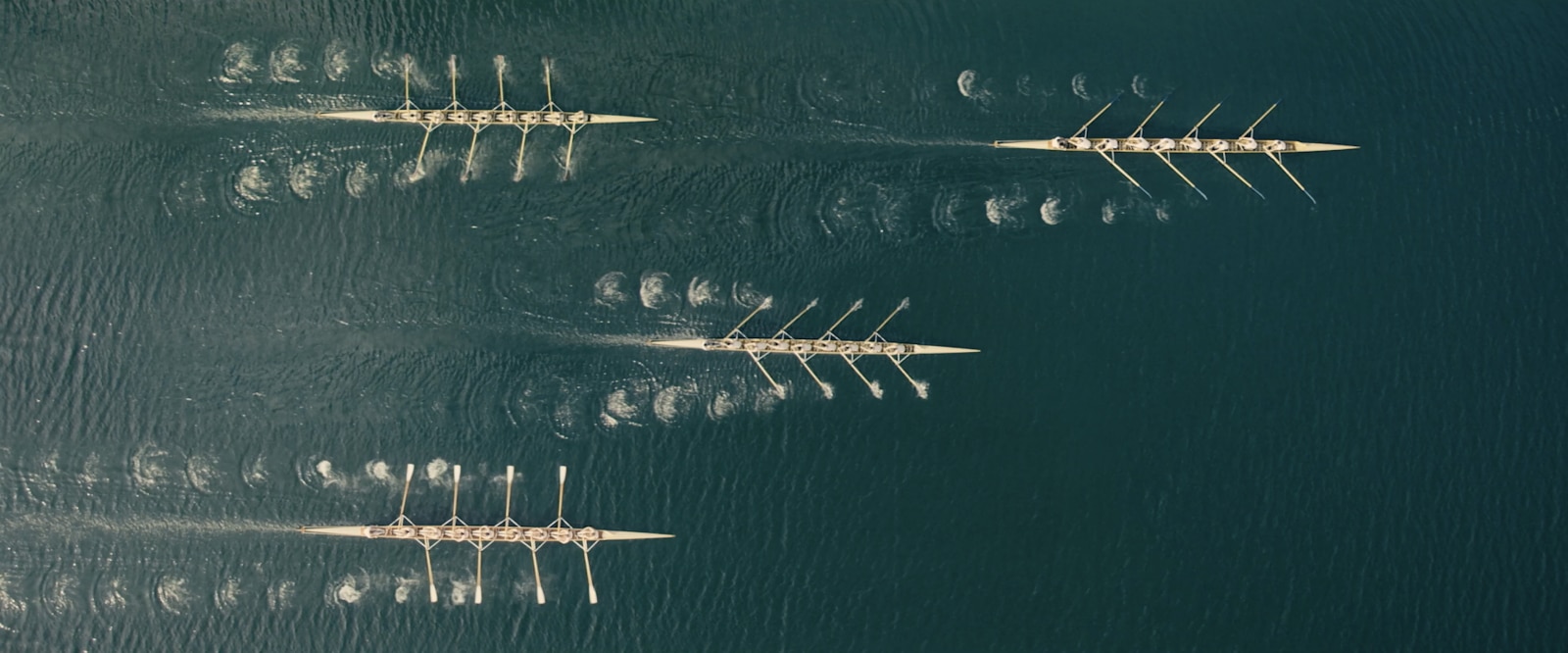
There were 3 camera boats. A catamaran with a small camera jib arm. There was a larger, stronger boat with a 30ft Super Technocrane and then a smaller boat with a camera at the front on a tripod or on a Ronin 2 gimbal.

To shoot this complex scene Martin broke the race down into sections so they could shoot one part of the race before moving on to the next. They shoot the opening part of the scene and the start of the race in the first day and a half. One of the additional challenges faced was that the rowers can’t row non-stop for 8 hours. They normally train to compete in a single 5 or 6 minute long race, so rest periods had to be factored into the schedule.

A tracking vehicle was used on the shore to travel behind the spectators while following the boats. For the spectator train a representation of the train was built on a couple of trucks. A mechanism to make the trucks wobble was added and then both static and moving shots were done, some with blue screen behind the train and some with just the sky behind.
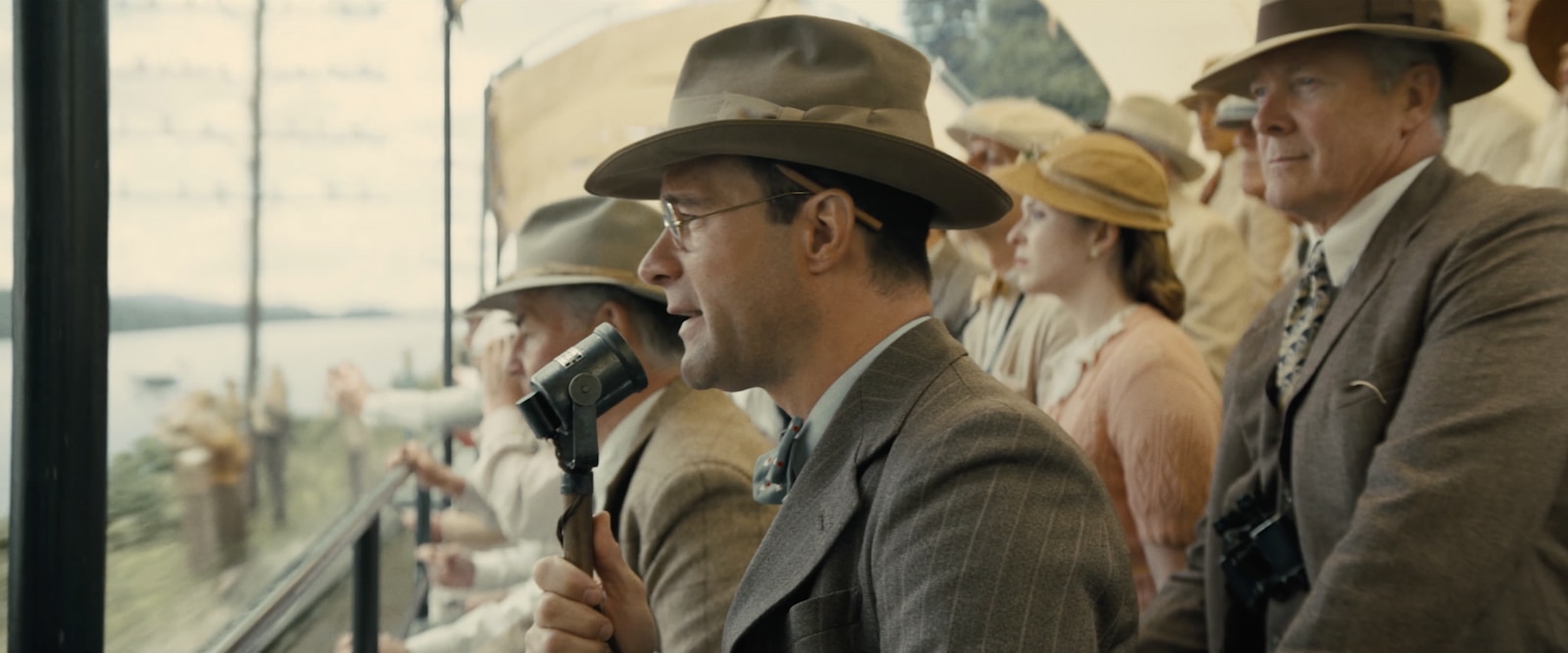
Many of the trees and landscape seen in the background of this scene were added in post production.
For the closeup shots of the Coxswain (the person that steers the boat) he was placed on a box tied to the very front of the camera catamaran boat while Martin operated used the VENICE Extension handheld. This way he could get in close to him but also quickly pan from the Coxswain to the other boats as they passed. By the time these shots were completed the Coxswain’s feet were very wet, but it was felt that this really was the best way to portray the energy and tension.
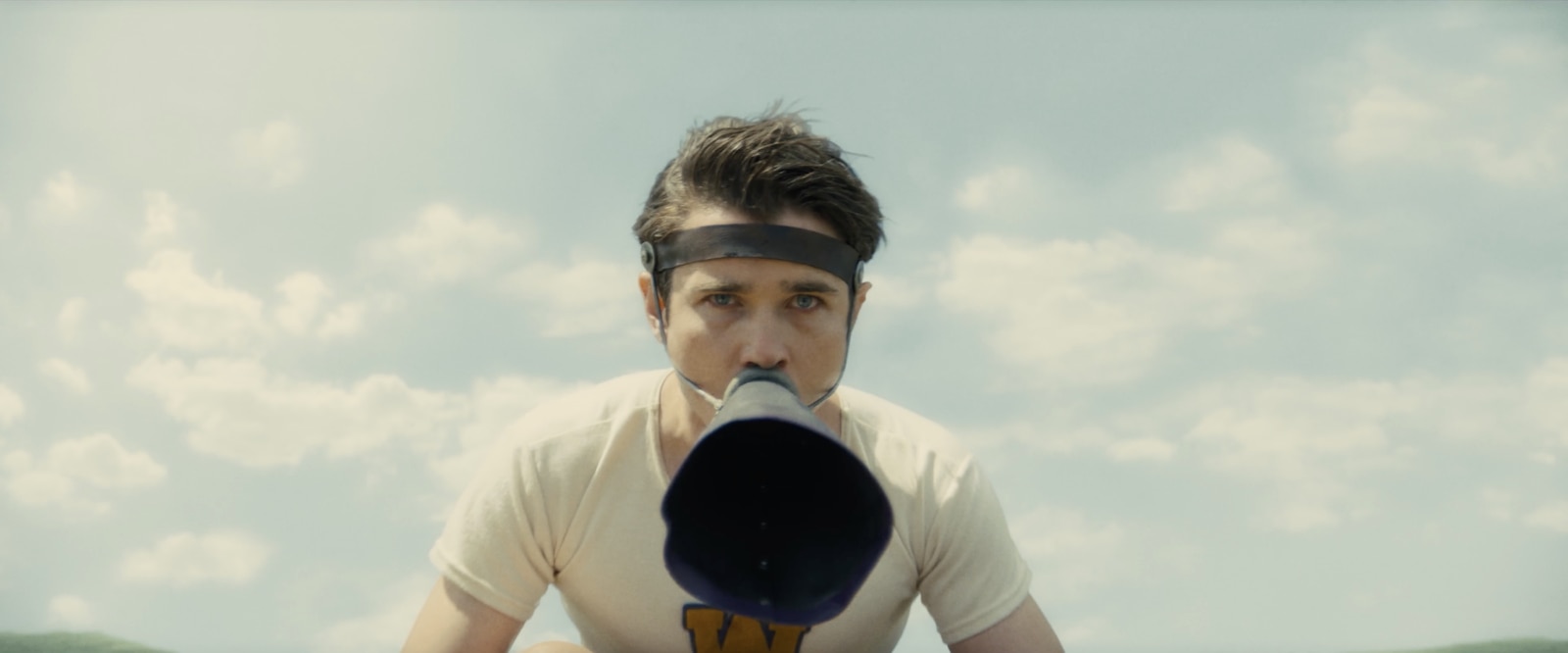
I Want My Seat Back Scene
The location used for this scene presented some big challenges for Martin. There was a huge high-level window at one end of the space and its light couldn’t be modified as it was above an inaccessible courtyard.
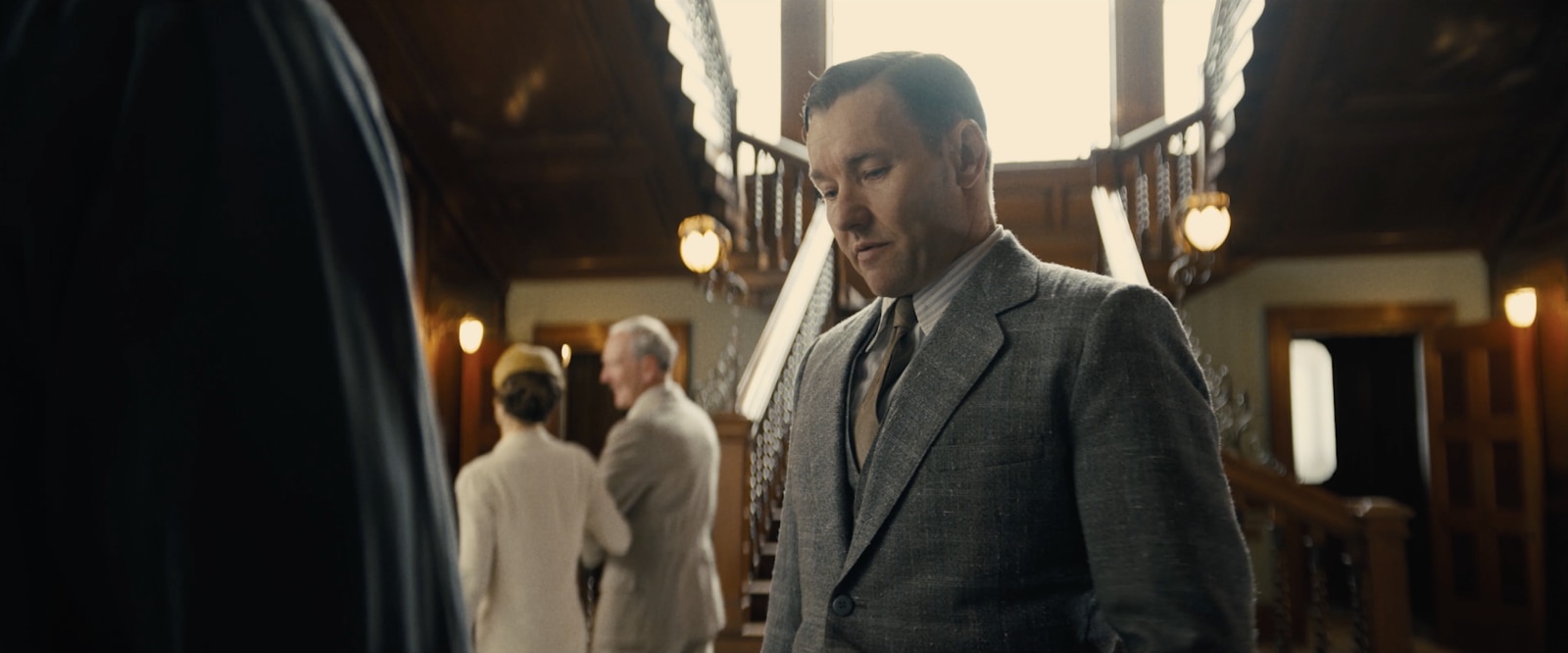
At the opposite end there was another window, but Martin was able to place lights outside this to control the levels. When the camera is facing Joe, the light is well controlled with a backlight coming from some 9K fixtures outside the smaller window. When the camera faces Callum, the main light source is the large uncontrolled window directly behind him and the sun comes and goes through this window changing the light. Martin added negative fill to the left and right of the shot to increase the contrast and then used a Rosco DMG light to add some fill to his face.

Practical lights are very important to Martin. He likes to use them as a starting point for his lighting, especially in old buildings with wood panels that reflect the light from any practical lights in an often warm, beautiful way. For this scene there were a number of existing wall lights that were fitted with warm tungsten bulbs to contrast against the cooler daylight coming through the windows. Martin says he likes simplicity, especially when it looks natural and doesn’t look strongly lit.
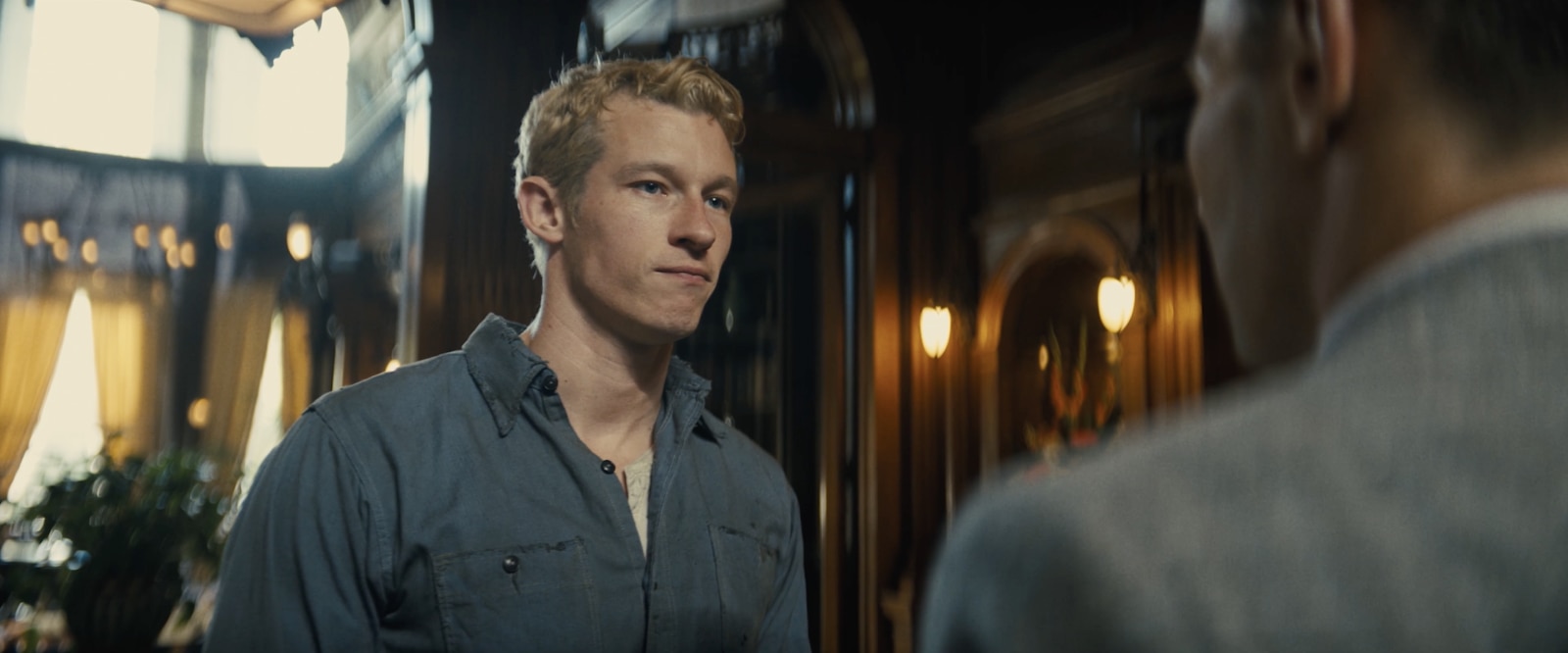
Even though the large window is overexposed and clipped Martin felt that the shot still looks great. He puts this down to the combination of the painterly quality of the ARRI Alpha anamorphic lenses, the shallow depth of field and the way the VENICE sensor behaves when it is over exposed.
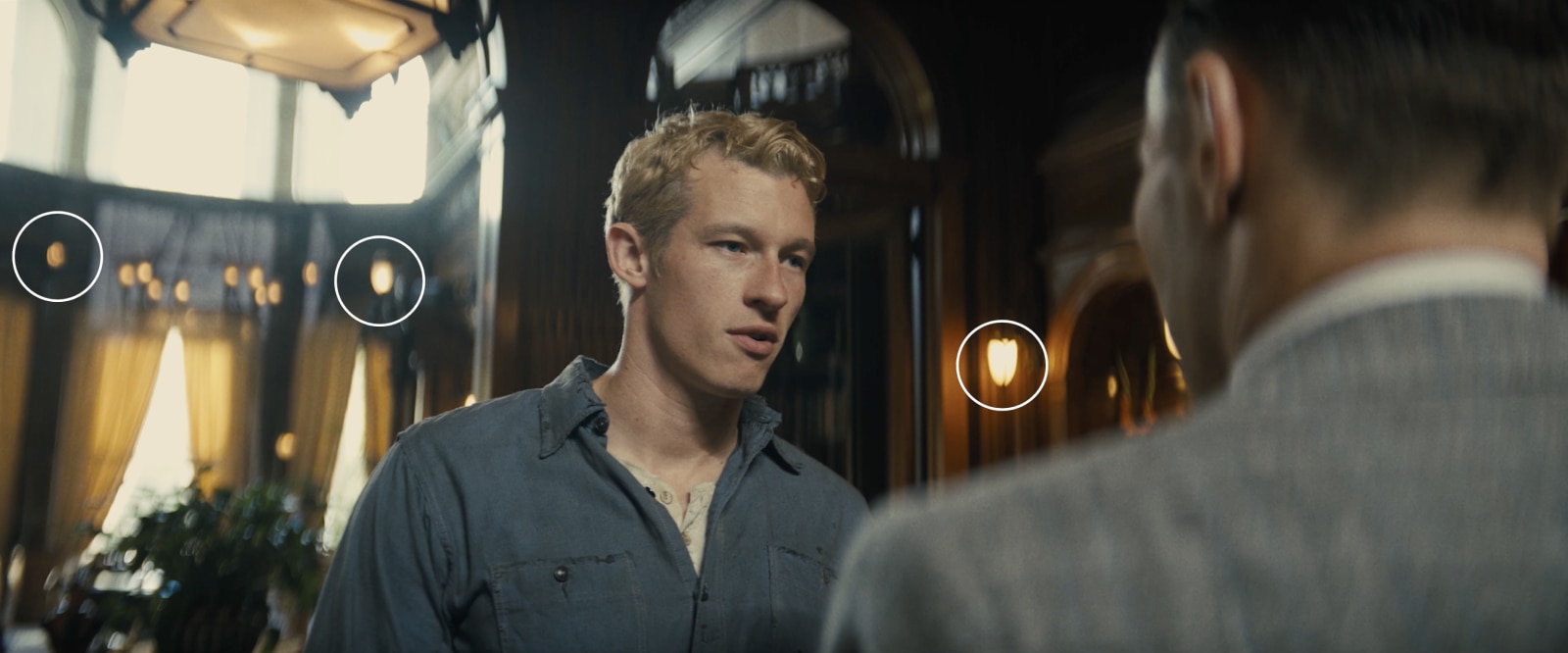
The beauty of the chip on the Sony is that it can just translate that and take that, it was one of the beautiful things that we discovered, that the whole film very often has that painterly quality.
Martin Ruhe, ASC






